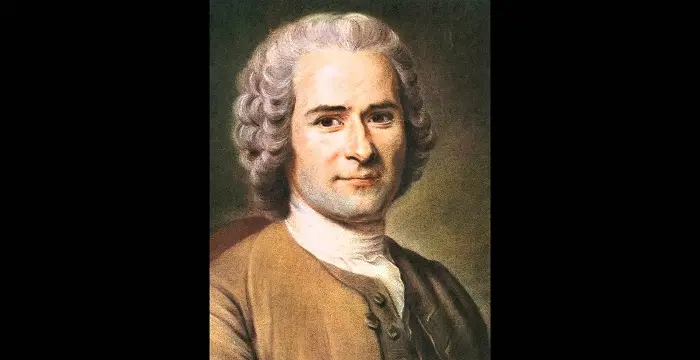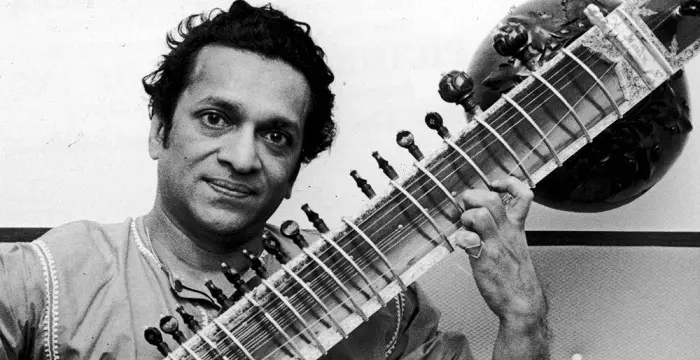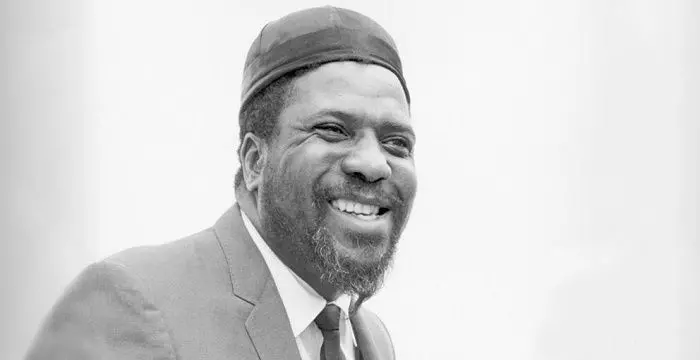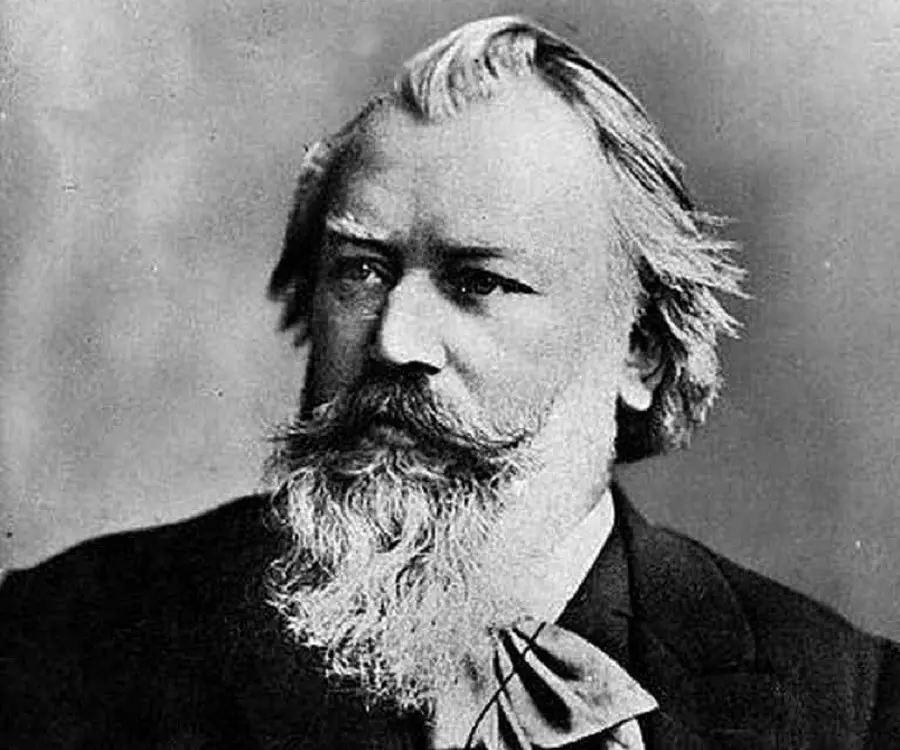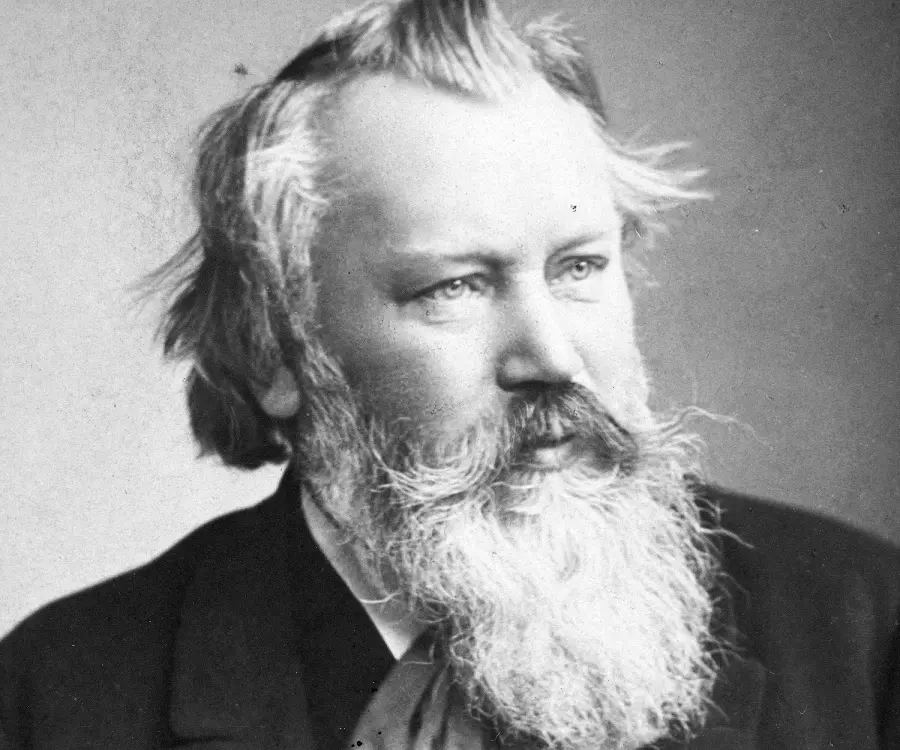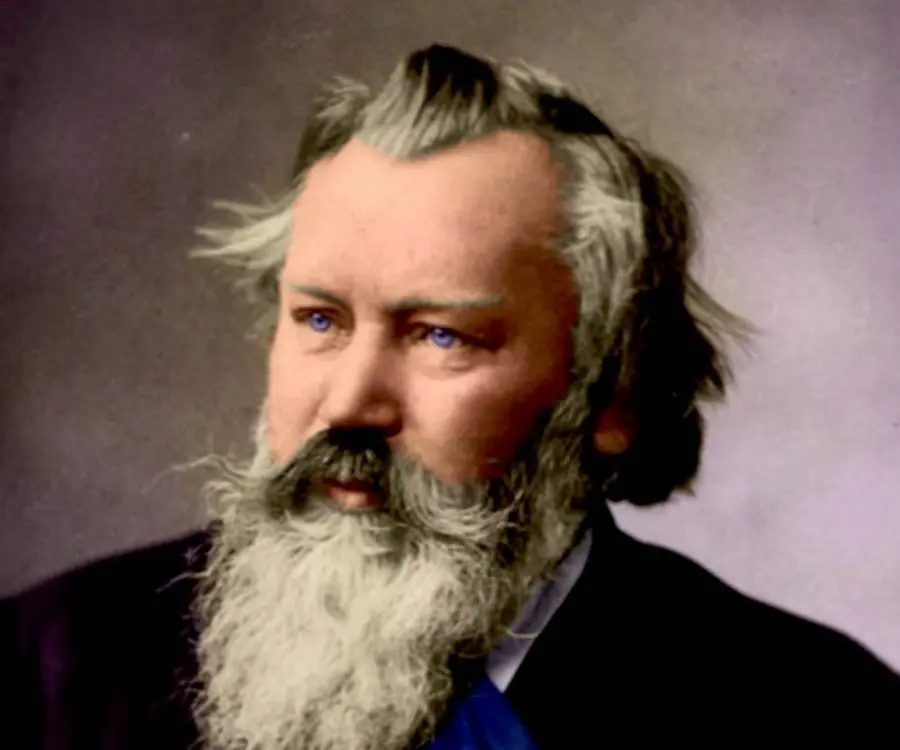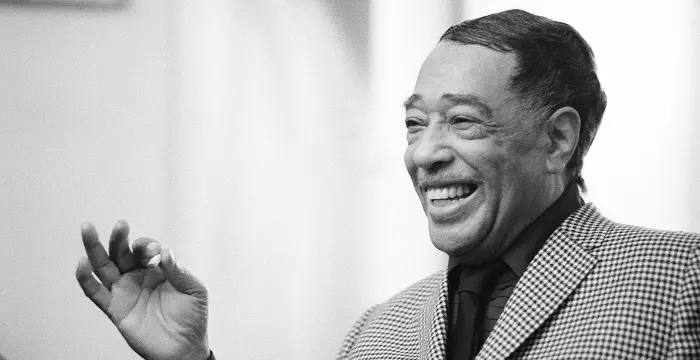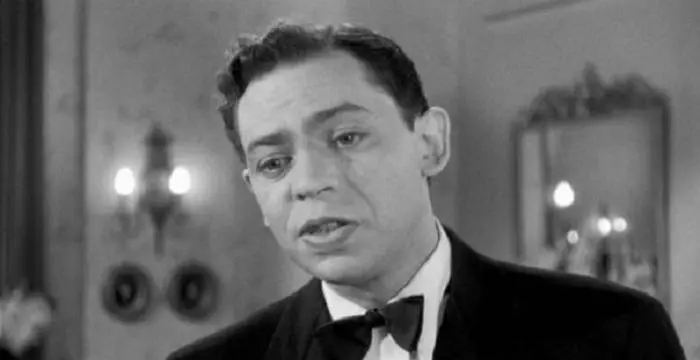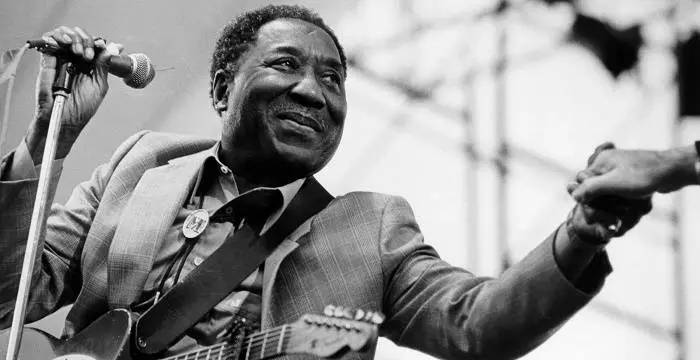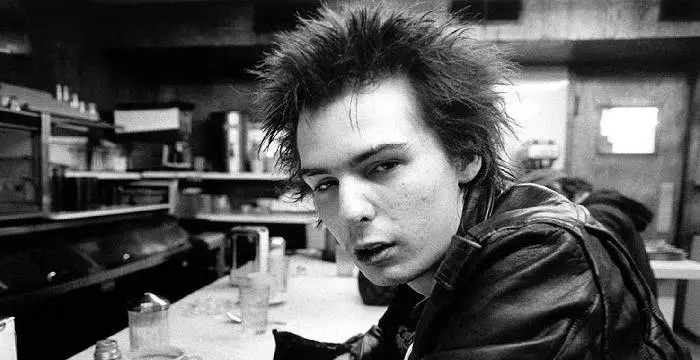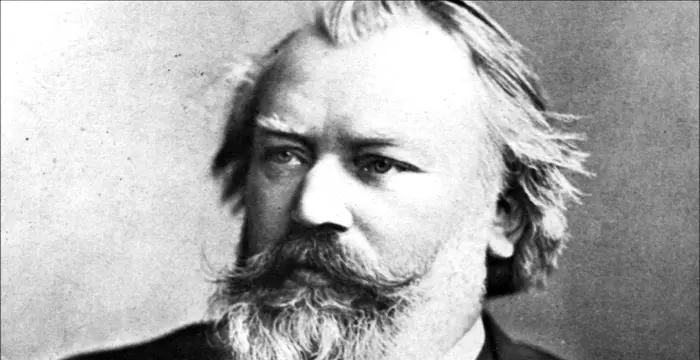
Johannes Brahms - Composers, Birthday and Facts
Johannes Brahms's Personal Details
Johannes Brahms was a well-known German composer and pianist best remembered for his choral work ‘A German Requiem'
| Information | Detail |
|---|---|
| Birthday | May 7, 1833 |
| Died on | April 3, 1897 |
| Nationality | German |
| Famous | Atheists, Musicians, Composers, Composers, Pianists |
| Siblings | Elise Brahms, Friedrich Brahms |
| Birth Place | Hamburg |
| Gender | Male |
| Father | Johann Jakob Brahms |
| Mother | Johanna Henrika Christiane Nissen |
| Sun Sign | Taurus |
| Born in | Hamburg |
| Famous as | Composer and pianist |
| Died at Age | 63 |
// Famous Composers
Jean-Jacques Rousseau
Jean-Jacques Rousseau was a noted Swiss-born philosopher, writer and composer. Check out this biography to know about his childhood, family life, achievements and other facts about his life.
Ravi Shankar
Ravi Shankar was one of the greatest music maestros from India who familiarized the West with the Indian classical music. Read the biography to know all about his profile, childhood, life and timeline.
Thelonious Monk
Thelonious Monk was an American jazz artist, pianist and composer, who is considered as one of the pioneers of the American jazz music. This biography provides detailed information on his childhood, life, music career, achievements and timeline.
Johannes Brahms's photo
Who is Johannes Brahms?
Johannes Brahms was a well-known German composer and pianist best remembered for his choral work ‘A German Requiem.’ Although the experimental musicians like the followers of Liszt and Wagner considered him old fashioned, critics in general accorded him the same rank as Bach and Beethoven. In fact, all through his life he had championed the Classical tradition of Joseph Haydn, Mozart, and Beethoven and his works combined the warmth of the Romantic era with the restrain of classical music. Born to a struggling musician, he began performing in taverns and dance halls at the age of thirteen. Very soon, he began to write his own music. By the time he was twenty, he was able to catch the attention of many established musicians and music critics. However, the real fame came when he settled in Vienna in early 1860s and wrote his famous piece ‘A German Requiem’. Brahms was always a perfectionist and rewrote each work several times. In his long career, he had composed varied types of works such as symphonies, concerti, chamber music, piano works and choral compositions. In addition to that, he had also left more than two hundred songs.
// Famous Pianists
Duke Ellington
Duke Ellington was an American jazz composer and performer who is among one of the greatest names in the history of jazz. This biography profiles his childhood, life, music career, achievements and timeline.
Andy Biersack
Learn about Andy Biersack, the famous American rock singer and pianist; his birthday, what he did before fame, his family life, fun trivia facts and more.
Oscar Levant
Oscar Levant was a pianist and comedian known for playing sarcastic characters on screen. This biography of Oscar Levant provides detailed information about his childhood, life, achievements, works & timeline.
Childhood & Early Life
Johannes Brahms was born on 7 May, 1833 in Hamburg. His father, Johann Jakob Brahms, was a musician from Heide, who came to Hamburg to pursue a career in music. His mother, Johanna Henrika Christiane Nissen, was a seamstress. He was born the second of their three children.
Johannes had his first musical training from his father. When he turned seven, he started taking piano lessons from Otto Friedrich Willibald Cossel and later from Eduard Marxsen.
When Brahms turned thirteen, he began contributing to the family income by playing at taverns, restaurants and local dance halls in the city’s dock area. Working for a prolonged period in smoke laden rooms soon affected his health and he became ill.
In 1847, he was sent to Winsen an der Luhe for rest. Here he conducted male choir and for it, he wrote his first choral composition. On returning to Hamburg, he resumed playing at taverns and to earn more money, started giving piano lessons.
Sometime now, he also started learning cello, but it came to an abrupt end when his instructor ran away with his instrument. During this period, he also performed in several concerts and began composing music for piano.
Career
In 1850, Brahms met Hungarian violinist Eduard Reményi, who introduced him to Hungarian gypsy music. For the next three years he composed several pieces for piano and then in April 1853, the two musicians went on a tour that actually launched Brahms in his career.
In May 1853, Brahms and Reményi went to Hanover and there they visited Joseph Joachim, a well-known Hungarian violinist. Earlier Brahms had heard Joachim play solo in violin concerto and was very much impressed. He now played a few of his pieces to Joachim.
Joachim was so impressed by what he heard that he provided Brahms with a letter of recommendation to Robert Schumann, a well known composer and influential music critic. The two also became life-long friends and close collaborators.
Sometime after that, Brahms and Reményi travelled to the Court of Weimar, where they were introduced to Franz Liszt. The elder musician was much impressed by Brahms’ work and invited him to join his group. However, Brahms failed to show proper appreciation of Liszt’s work, which offended Reményi and the two parted their ways.
On 1 October 1853, after a walking tour in the Rhineland, Brahms went to Düsseldorf to meet Schumann, armed with Joachim’s letter of recommendation. He had earlier sent the elder musician some of his work; but those were returned unopened. This time, the Schumanns welcomed him into their home.
Both Robert and his wife Clara were highly impressed by his music. Wanting to introduce the still unknown musician to the world, Schumann wrote an article in the 28 October 1853 issue of ‘Neue Zeitschrift für Musik’. In it, he praised Brahms so much that some even became skeptical.
Overnight, Brahms became famous. However, there was a long way to go before he could actually establish himself; at the same time, he felt compelled to work harder so as to live up to the expectation created by the article.
Thereafter, Brahms remained at Hanover, working with Joachim. In 1854, Schumann became mentally ill and had to be hospitalized. Brahms set aside his musical career and moved to Düsseldorf to help Clara in her hour of crisis.
Eventually, he took up an apartment above Clara’s and regularly visited Schumann at the sanatorium. He also looked after the children when Clara went away on her long concert tours. Gradually, as Clara’s eldest daughter began to take charge Brahms too went back to his work.
Schumann died in 1856. The following year, Brahms was appointed court music teacher and conductor at Detmold, the capital city of Principality of Lippe. For the next couple of years, he divided his time between Detmold, Göttingen and Hamburg, where in 1859, he formed and conducted a ladies’ choir.
In spite of such a hectic schedule, the period turned out to be highly productive for him. ‘Piano Concerto No. 1 in D Minor’ (1854–58) and ‘String Sextet in B-flat Major’ (1858–60) are two of his most famous works of this period.
In 1862, Brahms journeyed to Vienna, staying there for the winter. On returning to Hamburg, he unsuccessfully tried to secure the position of the conductor at the Hamburg Philharmonic concerts.
Therefore he went back to Vienna in 1863 and assumed the post of the director of Singakademie, a renowned choral society. Soon a conflict arose between his followers and the followers of Richard Wagner and Franz Liszt, who represented the new school of music.
Therefore in 1864, Brahms resigned from his post. Initially, he thought of taking up position elsewhere but later he decided to settle permanently in Vienna and concentrate fully on composing.
1865, he began to compose 'Eindeutsches Requiem, nach Worten der heiligen Schrift' (A German Requiem, to Words of the Holy Scriptures), his largest choral work. Premiered in 1868, the work established him as one of the greatest European composers.
As his fame grew, he not only began to compose more and more pieces, but also went on musical tours across Europe. Then in 1872, he succeeded Anton Rubinstein as the Director of Gesellschaft der Musikfreunde in Wien (Society of Friends of the Music in Vienna) and served in this capacity till 1875.
Thereafter, he did not accept any other formal position. In his later years, he helped to promote unknown talents; Antonín Dvořák being one of them.
In 1876, Brahms completed his first symphony. Its English premiere was held in Cambridge on 8 March 1877 and was conducted by Joachim. Later in 1877, 1883, and 1885, he published three other symphonies.
Meanwhile in 1881, he completed his second piano concerto titled, ‘Piano Concerto No. 2 in B-flat major’, a work he started in 1878. In the premier held in Budapest on November 9, 1881, Brahms was the soloist. In the same year, he also tried out his new orchestral works with the Meiningen Court Orchestra.
In 1890, he published ‘String Quintet in G Major’ and declared it to be his last work. However, the very next year, he composed ‘Clarinet Trio in A minor, Op. 114’ for the clarinetist Richard Mühlfeld. Later in 1894, he also composed two Clarinet Sonatas.
Major Works
*‘Piano Concerto No. 1 in D minor, Op. 15’, completed in 1858, was Brahms’ first major work. It is written in three movements and is around 40 to 50 minutes long. It was also his first orchestral composition to be performed in public.
However, it was ‘Eindeutsches Requiem, nach Worten der heiligen Schrift’ (A German Requiem), composed between 1865 and 1868, which confirmed his position as one of the best composers in Europe. The work comprises seven movements and lasts for around 65 to 80 minutes. It is sacred but non-liturgical and as the name suggests, is in German language.
Personal Life & Legacy
Brahms did not marry. In 1858, he had an affair with Agathe von Siebold of Göttingen and became engaged to her in 1859. But all of a sudden, he withdrew from the relationship. His letters prove that he did not want to go into any kind of permanent relationship that would bind him to a particular person.
Brahms did not marry. In 1858, he had an affair with Agathe von Siebold of Göttingen and became engaged to her in 1859. But all of a sudden, he withdrew from the relationship. His letters prove that he did not want to go into any kind of permanent relationship that would bind him to a particular person.
One reason could be that Clara was fourteen years older than Brahms and had a large family. He was also torn between his regards for Robert and his love for Clara. Yet, Clara remained an important part of his life and when they were not together, they communicated through letters.
Sometime around 1896, Brahms developed cancer and died from it on 3 April 1897 at the age of 63. He lies buried in the Zentralfriedhof in Vienna. The monument over his grave was designed by Victor Horta and was sculpted by Ilse von Twardowski-Conrat.
Shortly after his death, English composer Hubert Parry wrote a short symphonic movement for orchestra called ‘Elegy for Brahms’. Later music critic Max Kalbeck published his biography in eight volumes. His correspondences to various persons, including Clara, have also been published, giving us a glimpse into his life.
// Famous Atheists
Morgan Freeman
Morgan Freeman is an Academy Award winning actor known for his work in movies like ‘Street Smart’, ‘Driving Miss Daisy’ and ‘Million Dollar Baby’. This biography provides detailed information about his childhood, life, achievements, works & timeline.
Robert Smith
Robert Smith is an English musician and the lead singer of the British rock band, ‘The Cure.’ This biography of Robert Smith gives detailed information on his profile, childhood, life and timeline.
Jack Black
Jack Black is a renowned American actor-producer and voice artist. Explore this biography to learn more about his profile, childhood, career and timeline
Johannes Brahms biography timelines
- // 7th May 1833Johannes Brahms was born on 7 May, 1833 in Hamburg. His father, Johann Jakob Brahms, was a musician from Heide, who came to Hamburg to pursue a career in music. His mother, Johanna Henrika Christiane Nissen, was a seamstress. He was born the second of their three children.
- // 1847In 1847, he was sent to Winsen an der Luhe for rest. Here he conducted male choir and for it, he wrote his first choral composition. On returning to Hamburg, he resumed playing at taverns and to earn more money, started giving piano lessons.
- // 1850In 1850, Brahms met Hungarian violinist Eduard Reményi, who introduced him to Hungarian gypsy music. For the next three years he composed several pieces for piano and then in April 1853, the two musicians went on a tour that actually launched Brahms in his career.
- // 1853In May 1853, Brahms and Reményi went to Hanover and there they visited Joseph Joachim, a well-known Hungarian violinist. Earlier Brahms had heard Joachim play solo in violin concerto and was very much impressed. He now played a few of his pieces to Joachim.
- // 1st Oct 1853On 1 October 1853, after a walking tour in the Rhineland, Brahms went to Düsseldorf to meet Schumann, armed with Joachim’s letter of recommendation. He had earlier sent the elder musician some of his work; but those were returned unopened. This time, the Schumanns welcomed him into their home.
- // 28th Oct 1853Both Robert and his wife Clara were highly impressed by his music. Wanting to introduce the still unknown musician to the world, Schumann wrote an article in the 28 October 1853 issue of ‘Neue Zeitschrift für Musik’. In it, he praised Brahms so much that some even became skeptical.
- // 1854Thereafter, Brahms remained at Hanover, working with Joachim. In 1854, Schumann became mentally ill and had to be hospitalized. Brahms set aside his musical career and moved to Düsseldorf to help Clara in her hour of crisis.
- // 1854 To 1860In spite of such a hectic schedule, the period turned out to be highly productive for him. ‘Piano Concerto No. 1 in D Minor’ (1854–58) and ‘String Sextet in B-flat Major’ (1858–60) are two of his most famous works of this period.
- // 1856Schumann died in 1856. The following year, Brahms was appointed court music teacher and conductor at Detmold, the capital city of Principality of Lippe. For the next couple of years, he divided his time between Detmold, Göttingen and Hamburg, where in 1859, he formed and conducted a ladies’ choir.
- // 1858*‘Piano Concerto No. 1 in D minor, Op. 15’, completed in 1858, was Brahms’ first major work. It is written in three movements and is around 40 to 50 minutes long. It was also his first orchestral composition to be performed in public.
- // 1858Brahms did not marry. In 1858, he had an affair with Agathe von Siebold of Göttingen and became engaged to her in 1859. But all of a sudden, he withdrew from the relationship. His letters prove that he did not want to go into any kind of permanent relationship that would bind him to a particular person.
- // 1862In 1862, Brahms journeyed to Vienna, staying there for the winter. On returning to Hamburg, he unsuccessfully tried to secure the position of the conductor at the Hamburg Philharmonic concerts.
- // 1863Therefore he went back to Vienna in 1863 and assumed the post of the director of Singakademie, a renowned choral society. Soon a conflict arose between his followers and the followers of Richard Wagner and Franz Liszt, who represented the new school of music.
- // 1864Therefore in 1864, Brahms resigned from his post. Initially, he thought of taking up position elsewhere but later he decided to settle permanently in Vienna and concentrate fully on composing.
- // 18651865, he began to compose 'Eindeutsches Requiem, nach Worten der heiligen Schrift' (A German Requiem, to Words of the Holy Scriptures), his largest choral work. Premiered in 1868, the work established him as one of the greatest European composers.
- // 1865 To 1868However, it was ‘Eindeutsches Requiem, nach Worten der heiligen Schrift’ (A German Requiem), composed between 1865 and 1868, which confirmed his position as one of the best composers in Europe. The work comprises seven movements and lasts for around 65 to 80 minutes. It is sacred but non-liturgical and as the name suggests, is in German language.
- // 1872As his fame grew, he not only began to compose more and more pieces, but also went on musical tours across Europe. Then in 1872, he succeeded Anton Rubinstein as the Director of Gesellschaft der Musikfreunde in Wien (Society of Friends of the Music in Vienna) and served in this capacity till 1875.
- // 1876In 1876, Brahms completed his first symphony. Its English premiere was held in Cambridge on 8 March 1877 and was conducted by Joachim. Later in 1877, 1883, and 1885, he published three other symphonies.
- // 1881Meanwhile in 1881, he completed his second piano concerto titled, ‘Piano Concerto No. 2 in B-flat major’, a work he started in 1878. In the premier held in Budapest on November 9, 1881, Brahms was the soloist. In the same year, he also tried out his new orchestral works with the Meiningen Court Orchestra.
- // 1890In 1890, he published ‘String Quintet in G Major’ and declared it to be his last work. However, the very next year, he composed ‘Clarinet Trio in A minor, Op. 114’ for the clarinetist Richard Mühlfeld. Later in 1894, he also composed two Clarinet Sonatas.
- // 3rd Apr 1897Sometime around 1896, Brahms developed cancer and died from it on 3 April 1897 at the age of 63. He lies buried in the Zentralfriedhof in Vienna. The monument over his grave was designed by Victor Horta and was sculpted by Ilse von Twardowski-Conrat.
// Famous Musicians
Ted Nugent
Ted Nugent is a hard rock musician known for his hits ‘Stranglehold’ and ‘Cat Scratch Fever’. This biography of Ted Nugent provides detailed information about his childhood, life, achievements, works & timeline.
Muddy Waters
Muddy Waters was a blues musician referred to as the 'father of modern Chicago blues.' Check out this biography to know about his childhood, family life, achievements and fun facts about him.
Travis Bacon
Travis Bacon is an American musician and actor, better known as the son of veteran actors Kevin Bacon and Kyra Sedgwick. Find more about his family, birthday, etc.
Andrew Taggart
Andrew Taggart is an American DJ who gained fame as one half of the famous DJ duo ‘The Chainsmokers,’ alongside Alex Pall. Let’s take a look at his childhood, family, personal life, career, achievements, etc.
Mike Love
One of the famous members of ‘The Beach Boys’, Mike Love is an American singer, musician and lyricist. Check out this biography to get more detailed information on his life.
Sid Vicious
Sid Vicious was an English musician known for his work with the band ‘Sex Pistols’. Check out this biography to know about his childhood, family life, achievements and fun facts about him.
Johannes Brahms's FAQ
What is Johannes Brahms birthday?
Johannes Brahms was born at 1833-05-07
When was Johannes Brahms died?
Johannes Brahms was died at 1897-04-03
Where was Johannes Brahms died?
Johannes Brahms was died in Vienna
Which age was Johannes Brahms died?
Johannes Brahms was died at age 63
Where is Johannes Brahms's birth place?
Johannes Brahms was born in Hamburg
What is Johannes Brahms nationalities?
Johannes Brahms's nationalities is German
Who is Johannes Brahms siblings?
Johannes Brahms's siblings is Elise Brahms, Friedrich Brahms
Who is Johannes Brahms's father?
Johannes Brahms's father is Johann Jakob Brahms
Who is Johannes Brahms's mother?
Johannes Brahms's mother is Johanna Henrika Christiane Nissen
What is Johannes Brahms's sun sign?
Johannes Brahms is Taurus
How famous is Johannes Brahms?
Johannes Brahms is famouse as Composer and pianist
